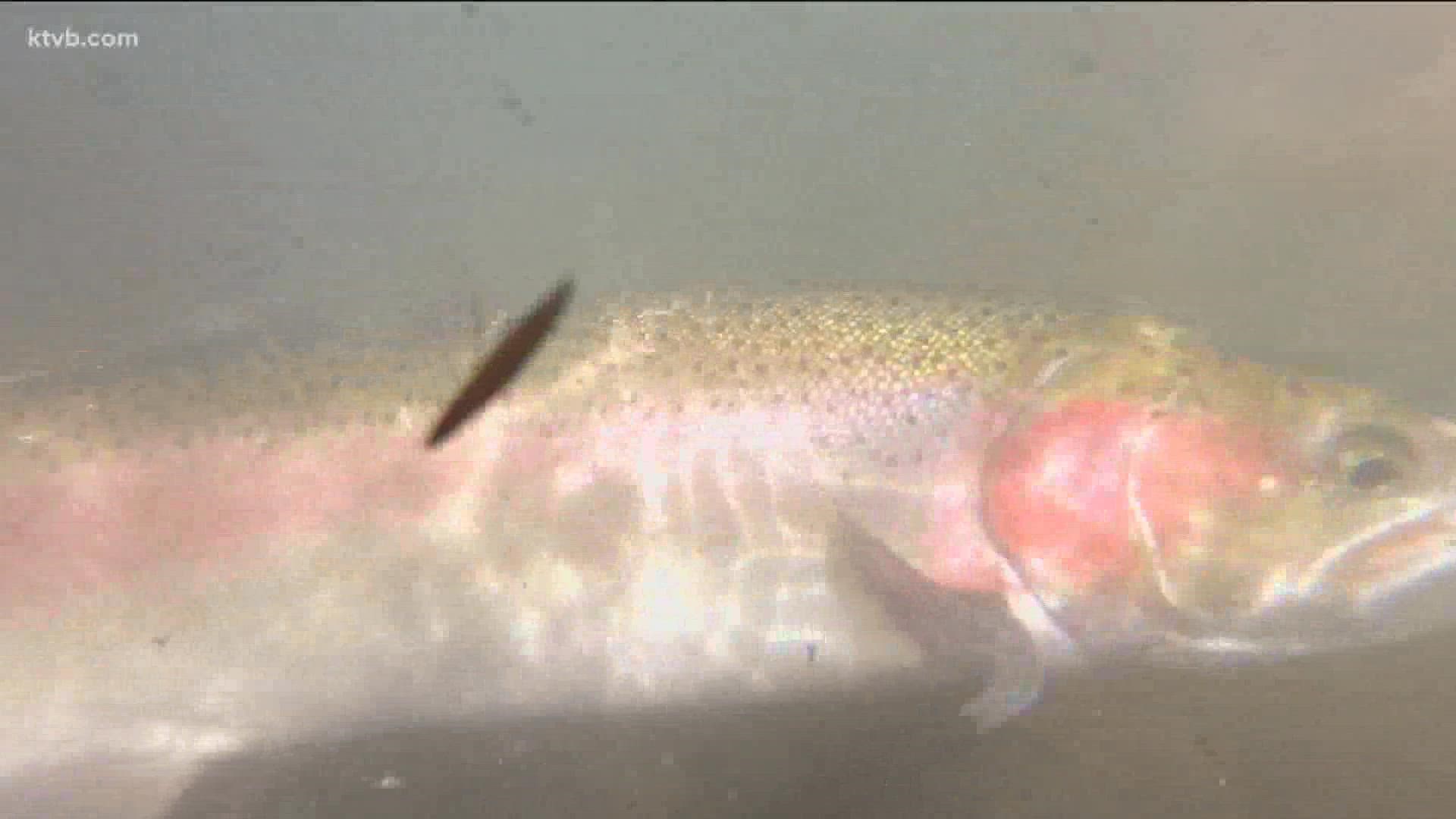BOISE, Idaho — An emergency trap-and-truck operation of Idaho-bound endangered sockeye salmon because of high water temperatures in the Snake and Salmon rivers netted enough fish at an eastern Washington dam to sustain an elaborate hatchery program, wildlife officials said Tuesday.
Idaho Fish and Game officials captured 201 salmon at Lower Granite Dam last month that are now at the Eagle Fish Hatchery in southwestern Idaho.
In all, more than 600 sockeye salmon reached Lower Granite Dam this year. More than 400 passed the dam to attempt the final leg of the journey to central Idaho unaided — a 45-day trip on average. About 100 are expected to survive. Two have arrived so far, the first on Saturday.
“I've been really pleased with the success that we've seen through trap and haul,” said John Powell, a fisheries research biologist with Fish and Game. “It's really amazing that we also have fish that are able to make it all the way back (to central Idaho) given the temperature and flow conditions that they experienced this year.”
Water temperatures in some areas have surpassed 75 degrees, lethal for salmon.
Fish arriving in central Idaho will also be taken to the Eagle Fish Hatchery to join the 201 trapped at the dam. Some will be spawned at the hatchery and others will be released into Redfish and Pettit lakes in central Idaho to spawn naturally. Combined with fish raised at hatcheries, more than 1,000 adult sockeye salmon are expected to be released into the lakes next month.
An estimated 150,000 sockeye at one time returned annually to the lakes near the town of Stanley. Redfish Lake was named for the abundant red-colored salmon that spawned there. Federal officials say the run declined starting in the early 1900s because of overfishing, irrigation diversions, dams and poisoning,
Snake River Sockeye salmon were listed as endangered in 1991 when they teetered on the brink of extinction. An elaborate hatchery program was started that decade to save the species.
The program includes genetic testing to determine the best parent pairings and raising brood stock that never enter the wild to produce future generations. Powell said the program has retained 95% of the genetic diversity of the population that evolved to survive the 1,800-mile roundtrip to the ocean and back.
But fish returning from the wild are needed to sustain the program.
It's only the second time wildlife officials have trapped and trucked sockeye salmon at Lower Granite Dam. The first time was in 2015, when warm water wiped out most of that year's run in the entire Columbia Basin. Only 91 adult sockeye made it to Idaho, with many of those trapped at the dam after the magnitude of the unfolding disaster became apparent.
The number of fish returning to central Idaho has fluctuated widely over the last three decades. From 1991 to 1999, only 23 fish returned to central Idaho. In 2014, the program reached its peak with more than 1,500 adult fish making it back.
Numbers rebounded after the 2015 collapse until 2019, when only 17 made it back, followed by 152 last year.
Poor returns in recent years are also associated with the release of hatchery-raised young fish, called smolts, in central Idaho. Many of the smolts, about 6.5 inches long, died immediately upon release. Biologists determined the young fish died because they couldn’t acclimate to the hard water in Red Fish Lake Creek after being raised in the soft water at the Springfield Fish Hatchery in eastern Idaho.
Smolts are now acclimated at the Sawtooth Hatchery on the Salmon River before being released.
The Springfield Fish Hatchery was built to increase the number of smolts being released, and this year for the first time reached its goal of 1 million smolts. They were released in late April from the Sawtooth Hatchery, about a week ahead of schedule due to turbidity in the Salmon River that threatened fish in the hatchery.
Powell said those fish had one of the best survival rates of any release, with about 75% making it to Lower Granite Dam, well above the 50% average.
“I think at this point there's reason for optimism,” Powell said. “We're releasing smolts through acclimation, and those fish are surviving downstream better.”
Lower Granite Dam is one of eight dams the young salmon have to negotiate on their way to the ocean.
Fish that survive arrive at the ocean about two and a half weeks after being released in Idaho. Most spend two years in the ocean before starting the return trip, taking just under two months on average for those that survive to reach central Idaho.
Watch more Local News:
See the latest news from around the Treasure Valley and the Gem State in our YouTube playlist:

